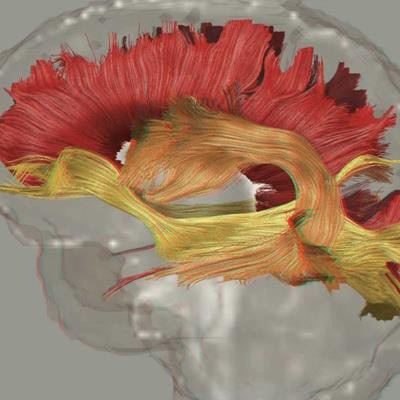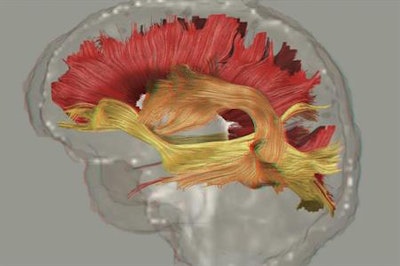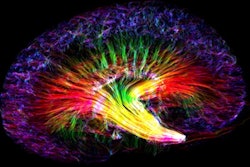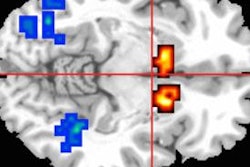
Disruptions in the connectivity of the brain's white matter, as seen on diffusion-tensor MR images (DTI-MRI), could play a larger role in schizophrenia than previously thought, according to a study published online October 17 in Molecular Psychiatry.
Researchers at the University of Southern California (USC) observed "frayed wiring" in white matter, contradicting the theory that schizophrenia manifests solely in the prefrontal and temporal lobes, which are responsible for personality, decision-making, and hearing perception.
"We can definitively say for the first time that schizophrenia is a disorder where white-matter wiring is frayed throughout the brain," co-lead author Sinead Kelly, PhD, a researcher at USC's Keck School of Medicine, said in a press release. "These findings could lead to the identification of biomarkers that enable researchers to test patients' response to schizophrenia treatment."
The USC study is the largest analysis of white-matter differences in a psychiatric disorder to date, according to the researchers. The group analyzed data from 1,963 people with schizophrenia and 2,359 healthy controls in Australia, Asia, Europe, South Africa, and North America. The big data project pulled from 29 different international studies by the Enhancing Neuro Imaging Genetics Through Meta Analysis (ENIGMA) network.
By using DTI to measure the movement of water molecules in white matter, the researchers were able to locate problem areas in the brain's normally insulated communication system.
 Fiber pathways in the brain are altered in schizophrenia, an illness that may involve hallucinations, psychosis, and depression. Image courtesy of the University of Southern California and Molecular Psychiatry.
Fiber pathways in the brain are altered in schizophrenia, an illness that may involve hallucinations, psychosis, and depression. Image courtesy of the University of Southern California and Molecular Psychiatry.Although the researchers found that frayed communication areas were present throughout the brains of people with schizophrenia, the poorly insulated wiring was most evident in the corpus callosum, which allows for communication between the brain hemispheres, and in the frontal portion of the corona radiata, a key structure for information processing.
The study could help improve the "understanding of the mechanisms behind schizophrenia, a mental illness that -- left untreated -- often leads to unemployment, homelessness, substance abuse, and even suicide," Kelly added.
The findings also pave the way for more focused scientific inquiry, such as into the causes of these white-matter abnormalities. Because schizophrenia is partly hereditary, specific genes might promulgate the disorder through slight alterations in brain wiring, Kelly speculated.


.fFmgij6Hin.png?auto=compress%2Cformat&fit=crop&h=100&q=70&w=100)





.fFmgij6Hin.png?auto=compress%2Cformat&fit=crop&h=167&q=70&w=250)











